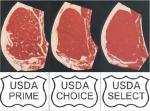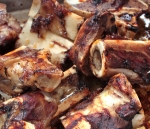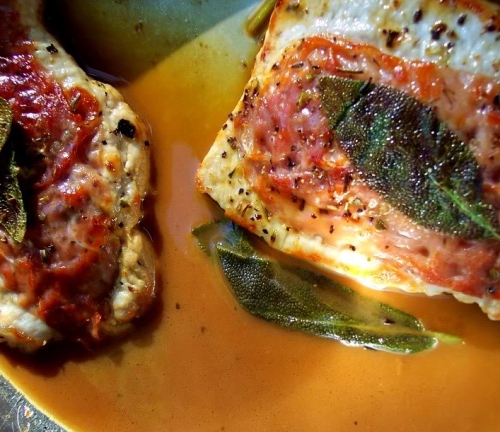In “A Note from Jill,” which serves as an introduction to her latest book, The Sweet Potato Queens’ Big-Ass Compendium of Fat and Happy: Recipes to Improve Your Disposition (Shelton House Press, $14.95), HRH the BOSS QUEEN HERSELF declares (Jill Conner Browne never really merely says anything), “There Are NO Funny Stories in This Book.” Well, perhaps not AS SUCH, but ANYTHING Ms. Browne puts her lacquered and bejeweled hand to is going to be smart, sassy, brassy, and, yes, funny.
The fun begins far before Jill’s “Note” (p. 11), with a lengthy disclaimer: WARNING AND HOLD HARMLESS: ALL OF THE RECIPES HEREIN ARE POISON! IF YOU EAT THIS STUFF ALL THE TIME, YOU WILL DIE- AND YOU WILL DIE WITH A HUGE BEE-HIND; HOWEVER, THEY ARE VERY GOOD FOR YOUR DISPOSITION. PROCEED AT YOUR OWN RISK. This elaborate salute to our litigious society goes on for another ninety words, followed by a declaration of LIMITS OF LIABILITY AND DISCLAIMER OF WARRANTY, which includes such pettifoggery as THE AUTHOR AND PUBLISHER MAKE NO REPRESENTATIONS OR WARRANTIES WITH RESPECT TO THE ACCURACY, APPLICABILITY, FITNESS OR COMPLETENESS OF THE CONTENTS OF THIS MATERIAL. What follows this delightfully dense froth of legalese is nothing less than a NOTE REGARDING FOOD ALLERGIES: in which Her Majesty avows that SHE HERSELF has no food allergies and furthermore hasn’t made ANY INGREDIENT ADJUSTMENTS, ALTERNATIVE RECOMMENDATIONS, OR CONSIDERATION WHATSOEVER FOR SUCH IN THIS MATERIAL, and if you have food allergies it’s your responsibility to deal with them. “Be particular,” she adds.
Back to the introduction, where Ms. Browne presents her two-fold purpose for this work. “First-fold” (secondary) is “to give YOU death-defying recipes from ALL of the Sweet Potato Queens® books (so far) in one convenient pile . . . with absolutely no entertaining embellishments whatsoever.” “Second-fold,” (primary) is to PREVENT you from e-mailing and Facebooking and Tweeting me that you “lost/loaned/gave away your book(s)” and you “MUST HAVE CHOCOLATE STUFF (or Whatever It Is You’re Currently Craving) RIGHT THIS VERY SECOND OR YOU WILL SURELY DIE” and would I please take the time out of MY day to go personally find which book of the NINE that your desired recipe is in (oddly enough, I do not know them all by heart) and would I furthermore then take the time out of MY day to sit down and RE-TYPE said recipe FOR YOU when AS WE ALL KNOW, I have ALREADY DONE THAT when I put them ALL into convenient BOOKS for you, but which YOU have somehow-through no fault or responsibility of MINE- not managed to hold onto.” So much for “no entertaining embellishments,” right? “I never intended to take y’all to raise,” she adds.
In two successive “folds,” Browne informs readers that the titles of books where the recipes were originally printed appear at the end of each recipe (the e-book contains links to purchase these works) as well as you will find links “to some ingredients and pots, pans, bowls, utensils, etc. that you might be lacking.” And, finally, “One More-Fold: I have also included 33 NEW recipes that will appear in the next SPQ” book as well – just to demonstrate what a Good Sport I am.” How sweet is that?
My hope-no, my prayer – is that y’all will also buy the printed copies and their electronic twins of all nine of my other books, and the audio versions of them as well BECAUSE I have, once again, massive plastic surgery needs and your purchases are simple ways that YOU can help!”
Browne also has a Kindle App for download (“so you can easily shop for the ingredients of your favorite SPQ recipes AND you’re not likely to be loaning out your PHONE, tablet, or Kindle then e-mailing me in tears for some recipe”.) Never let it be said that Jill Conner Browne is not au courant. Likewise, never let it be said that Ms. Browne doesn’t know her way around a kitchen. In her “Basic Stuff to Know Before You Begin Using These Recipes,” she makes several smart recommendations, among them using a “running over” teaspoon whenever one of vanilla needed, using salted butter, and to “be particular” when it comes to buying (DARK) brown sugar. Jill also provides this wonderful piece of don’t-be-a-dumb-ass/no-nonsense advice:
“If the recipe does not specifically state the size/type pan to be used, it doesn’t really matter. Look at how much is in the bowl and figure out which pan you have that will hold it. I am going out on a limb and assuming that you have sense enough to NOT try to cram a gallon of something into a quart pan-or try to make a quart of something cover the bottom of a gallon pan. Please tell me that my trust is not misplaced.”
The Sweet Potato Queens’ Bog-Ass Compendium of Fat and Happy contains 216 recipes; breads (18), breakfast (11), casseroles (17), chicken (7), dips and appetizers (23), drinks (9), meat (11), salads (10), “sammiches” (8), seafood (4), veggies (28), and sweets (69)(!). Nine other recipes fall into the category of “weird shit,” among them “Love Lard,” “Racoon Loaf,” and “Damon Lee Fowler’s Bacon Popcorn.” Stellar additions include: “Queen of the Night Salsa,” “Spinach Madeline.” “Bacon and Beagle Dicks (cocktail sausages),” “Olive Yum Yums,” and “Armadillo Hunter’s Shrimp.”
Sure, you’re not going to find many of these recipes on a keto sideboard, and you might want to double down up your Lipitor for any extended indulgence. Browne is a great cook, and she’s taken a lot of care with the recipes, which are well-written and quite easy to follow. This isn’t what I’d call a “family” cookbook, but if you do a lot of entertaining or have a lot of company over the holidays, it’s a wonderful thing to have on hand, and a TON of FUN!














